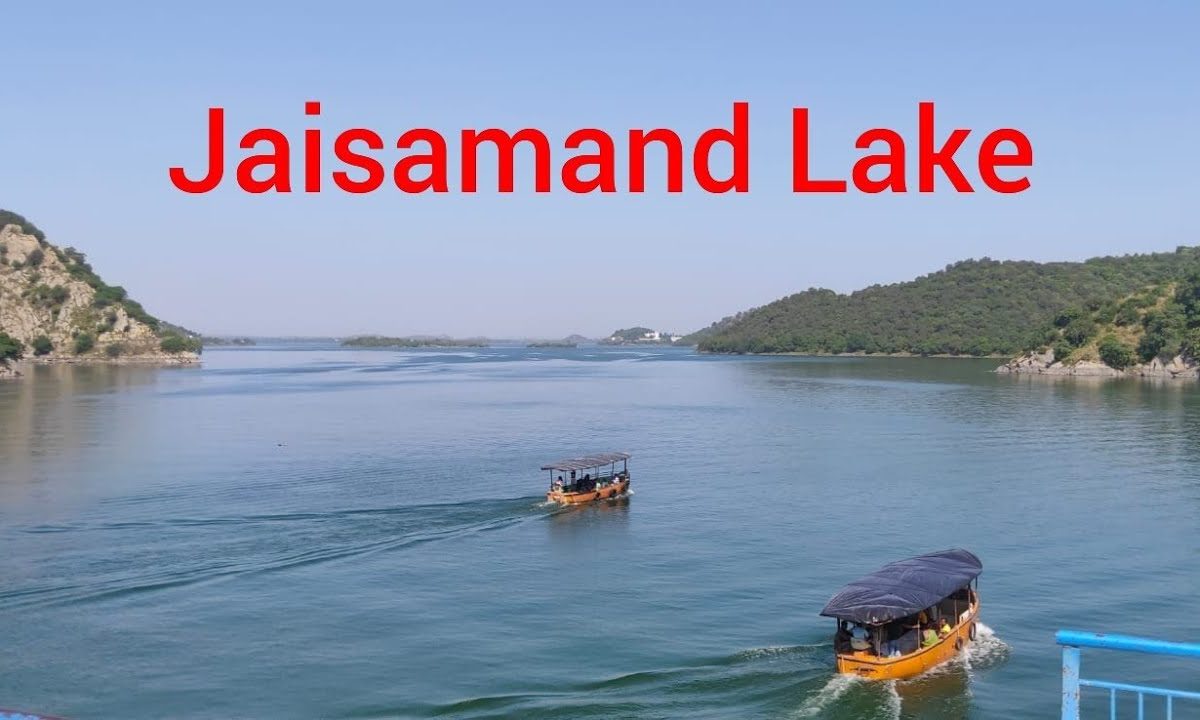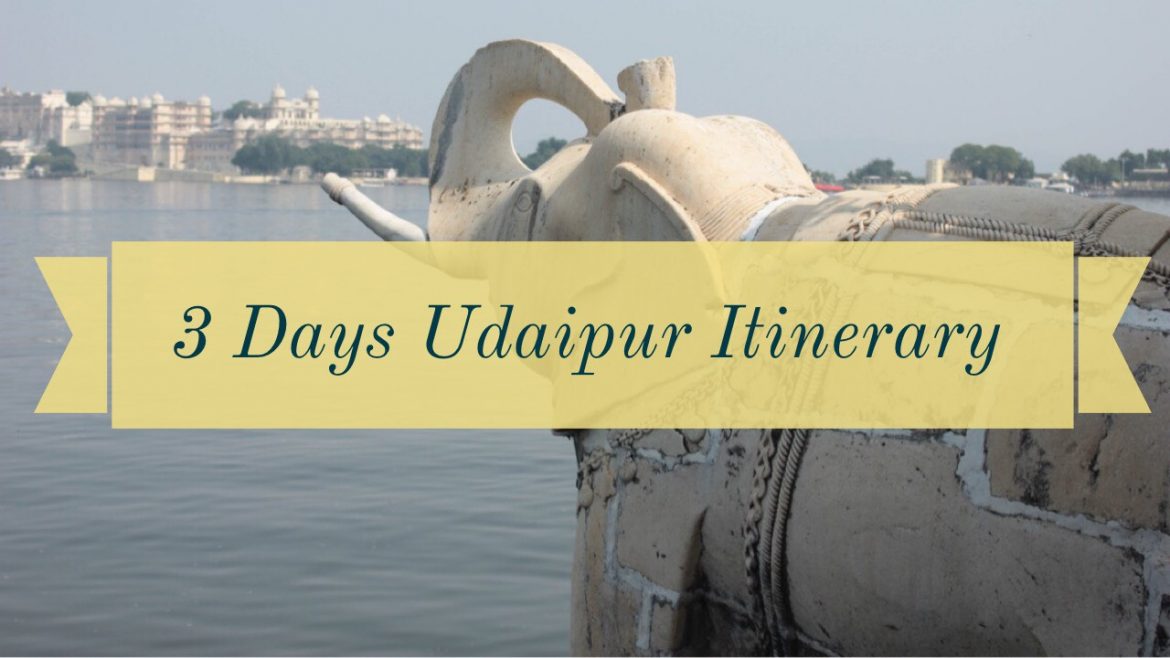
Jagmandir Udaipur: The Floating Marvel of Royal Romance
June 5, 2025
Udai Sagar Lake: A Peaceful Gem of Udaipur’s Royal Past
June 23, 2025Nestled near Udaipur in Rajasthan, Jaisamand Lake is often celebrated as the crown jewel of heritage and nature. History buffs, wildlife lovers, and travelers alike flock to Jaisamand Lake Udaipur to breathe in its serene vistas. Also known as Dhebar Lake, this magnificent body of water owes its existence to the Jaisamand Lake Dam, a marvel of 17th‑century engineering. Locally referred to as Jaisamand Jhil, the lake spans a vast area, inviting visitors into its scenic arms. Whether you’re exploring ancient architecture or relaxing by the lakeside, the experience is further elevated by staying at the Best Hotel in Udaipur which offers easy access to this tranquil retreat and enhances your overall journey. In this extensive article, we journey across the expanse of Jaisamand Lake, exploring every aspect from origins and architecture to wildlife and tourism.

Historical Genesis
The Legacy of Rawal Jaisal
Builtin the 17th century, Jaisamand Lake also known as the Dhebar Lake, is the second-largest human-made Lake in India. The lake was constructed in 1685 AD under the reign of Maharana Jai Singh. The purpose of the lake was to build a marble dam across river Gomti. On the day of the inauguration of the dam, Maharana Jai Singh distributed gold worth his weight to the people of his kingdom. Before the construction of Govind Ballabh Pant Sagar, Jaisamand Lake was the most prominent artificial lake on the globe until 1902.
This grand water project created the expansive Jaisamand Jhil, transforming desert land into a thriving reservoir. The dam stands as a testament to royal resolve and architectural innovation, shaping the city’s historic landscape and enduring through centuries of Rajasthan’s climatic variations.
Construction and Architecture of the Dam
Jaisamand Lake is spread over an area of 36 square miles (93 Km2). The Jaisamand Lake is 14 Km in length, 9 Km wide, and 102 feet deep. The circumference of the lake is 30 miles. A colossal dam is constructed on the lake which is 1202 feet in length, 116 feet in height and 70 feet wide with a temple of Lord Shiva in the center.
On the northern end of Lake are the two palaces of Rana Jai Singh. Set on the foothills, Hawa Mahal and Ruthi Rani ka Mahal are the summer palaces of Queens surrounded by Jaisamand Lake on all four sides. The courtyard of the Palace has a pavilion, built with 12 pillars.
Geography and Physical Features
Vast Expanse of Water
Jaisamand Lake covers around 36 square kilometers, stretching across Udaipur’s eastern plains. Its shores are dotted with undulating hills and dense forests, offering dramatic beauty. As part of Jaisamand Lake Udaipur, the waters collect rainfall from the Aravalli catchments, swelling during monsoons and offering scenic reflections.
Seasonal inflow fluctuations change the lake’s character. In monsoons, Jaisamand Jhil rises to brim full, while winters expose sandy coves and rocky outcrops. Visitors adore the lake’s evolving moods, captured at dawn or dusk.
Islands and Inlets
Within Jaisamand Lake, several islands are nestled, historically used as retreats by royalty. Notably, Rani Island boasts the romantic Rani Palace or Jag Niwas, used by queens as a retreat. Today, visitors can explore ruins and gardens scattered across these islands.
The inlets and coves formed by the Jaisamand Lake Dam and catchment geography present ideal wildlife habitats. Migratory birds, including herons and ducks, find refuge here. Boating enthusiasts often aim to ferry across to these islands, taking in the stillness of Jaisamand Jhil.
Flora and Fauna
Terrestrial Wildlife
The forested terrain surrounding Jaisamand Lake is rich with diverse wildlife. It’s part of the Jaisamand Wildlife Sanctuary, home to leopards, sambar deer, nilgai, jackals, hyenas, and migratory birds. These animals thrive due to the consistent water provided by Jaisamand Jhil, and the dam‑fed ecosystem.
Researchers study the balance between human activities—such as tourism and fishing—and wildlife conservation around the lake, ensuring sustainable practices continue.
Aquatic Diversity
Beneath the placid surface of Jaisamand Lake, fish species abound. Carp, catfish, and murrel are common, prized by local fishermen and anglers. A regulated fishing permit system operates, preserving fish stocks while supporting local livelihoods.
Turtles, otters, and occasionally mugger crocodiles inhabit the lake too. Eco‑tourists may spot these creatures while boating across Jaisamand Jhil, glimpsed in the sun‑lit logs or drifting quietly below the surface.
Birdwatching Paradise
For birdwatchers, Jaisamand Lake is a delight. Many migratory birds arrive in winter, while native species flourish year-round. Flamingos, herons, kingfishers, and storks scan the waters for food. Boating tours are arranged near shoreline wetlands where birdwatching is best, with early morning tours offering sightings against dawn light.
Cultural and Heritage Sites
Rani Palaces and Temples
The lake’s islands hold ruins of palaces and temples built by royalty. Rani Island’s palace complex features pavilions overlooking Jaisamand Jhil. Nearby, the Shiva Temple on another islet draws pilgrims and photographers for its lakeside charm.
On the shore of Jaisamand Lake Udaipur, the Sunset Point temple and the Bhairon Temple are important cultural stops. Devotees gather during festivals, offering prayers with the lake’s serene backdrop adding spiritual ambiance.
Sheesh Mahal
Opposite Rani Island, the Sheesh Mahal stands poised above Jaisamand Jhil. Known for its frescoes and mirror work, this palace is said to have been a retreat for kings. Visitors can tour it today via boat, enjoying panoramic views of Jaisamand Lake and the dam.
Historic Events
Over centuries, Jaisamand Lake Udaipur has hosted royal ceremonies, boat races and festivals on the lake banks. Chronicled in local ballads, these events highlight the lake’s integration into Mewar’s cultural life. While grand festivals have waned, smaller ceremonies and religious events continue, connecting locals to their heritage.
Water Management and Irrigation
Role of the Dam
The Jaisamand Lake Dam remains integral to regional water supply. Its reservoir feeds irrigation canals across villages southeast of Udaipur. These canals nourish paddy, wheat, sugarcane, and pulses.
In post‑monsoon months, reservoir levels are monitored to optimize irrigation while maintaining ecological balance. Local authorities coordinate water release schedules, ensuring fair distribution and mitigating drought risk.
Community Benefits
Irrigation from Jaisamand Lake supports multiple villages, improving agricultural yield. Tour operators also rely on the lake’s presence for livelihoods—guides, boatmen, and cottage‑industry vendors maintain close dependence on Jaisamand Jhil tourism.
Sustainable fishing permits generate revenue for local councils and insurance initiatives for fishermen. Awareness drives about water conservation, wildlife protection, and eco‑friendly tourism are active in the region.
Tourism & Travel Guide
How to Reach
Airport- Dabok Airport of Udaipur is about 21 Km away from the Jaisamand Lake. You can hire a private taxi and reach the lake in about 40 to 45 minutes.
Railway station- Udaipur City Railway station is about 57 Km away from the Jaisamand Lake. You need to hire a cab or a private taxi to reach Jaisamand Lake.
Public transport- You can take a private bus which runs during the night from the central city to reach Jaisamand Lake. Jaisamand Lake is about 48 km from the central Udaipur city..
Entry fees and timings of Jaisamand Lake Udaipur
Jaisamand Lake is open all days of the week from 10 AM to 5 PM.
There is no Entry Fee to visit Jaisamand Lake. However, the cost of boating is Rs. 30 for Indians and Rs. 80 for Foreigners. The ticket price of Jaisamand Wildlife sanctuary is Rs.10 for Indians and Rs. 80 for foreign residents.
Best Time to Visit
The ideal visiting period is October to March, when Jaisamand Lake Udaipur is full, weather is mild, and migratory birds flock. Monsoon (July–September) adds dramatic beauty to the surroundings, though heavy rains can limit accessibility. Summer (April–June) brings high heat but is still manageable in early mornings or late evenings.

Activities at the Lake
Boating: Electric and row‑boat rides traverse near islands and palaces. Early morning or sunset slots offer stunning views.
Fishing: Licensed anglers can fish with local guides. Catch of the day often includes carp and catfish.
Birdwatching: Guided walks and boat tours highlight birdlife on distributary wetlands.
Photography: Landscapes, wildlife, ruins, and sunsets offer endless photographic subjects.
Picnicking: Lakeside lawns are perfect for quiet family outings.
Heritage Tours: Visit Rani Island’s palace, Sheesh Mahal, temple islets, and the dam structure.
Village Walks: Nearby villages provide cultural insight—people, handicrafts, farms and traditions tied to the lake ecosystem.
Guided vs Un‑guided Visits
Guided tours by local operators include boat rides, birding tips, heritage commentary and snacks. Hiring a knowledgeable guide enriches experiences. Self‑guided travelers can visit via shared boats or rickshaws but may miss hidden insights into the Jaisamand Lake Dam design or local folklore.
Conservation and Environmental Challenges
Pollution and Erosion
With growing tourism, Jaisamand Lake faces plastic pollution, sewage contamination, and bank erosion. Local NGOs and government groups are implementing clean‑up drives, waste‑segregation bins, and educational campaigns for visitors and villagers near the Jaisamand Jhil shores.
Wildlife Protection
Development pressures threaten wildlife habitats. The sanctuary around the lake fosters measures such as anti‑poaching patrols and ecological research. Migratory bird nesting grounds are being demarcated as protected zones.
Water Security
Hydrological monitoring ensures the Jaisamand Lake Dam sustains agricultural and ecological needs. Rainwater harvesting and sustainable farming methods are promoted to reduce use of lake water.
Community Involvement
Locals participate in homestays, guiding, eco‑tourism schemes and cultural demonstrations. Their stake in the lake’s health ensures long‑term viability.
Food, Culture & Local Experiences
Regional Cuisine
Travellers to Jaisamand Lake Udaipur can savor Rajasthani staples—dal‑baati‑churma, kachori, gatte ki sabzi—served lakeside at dhabas or resort cafés. Local fishermen may serve fresh fish curry cooked traditionally. Evening tea by Jaisamand Jhil is a favorite ritual.
Artisan Crafts
Villages around the lake host artisans weaving textiles, pottery, bamboo crafts, and miniature paintings. Visitors can purchase souvenirs like tie‑dye sarees and wooden carvings made from local wood. These craft clusters form part of cultural heritage tied to the lake’s rural economy.
Festivals & Folk Performances
Though large festivals are rare at the lake, nearby temples host Lakshmi Pooja and monsoon ceremonies. Some resorts arrange folk dance and puppet shows for visitors to experience Rajasthani culture alongside Jaisamand Lake Udaipur views.
Practical Tips for Visitors
Respect the Environment – Carry back trash, avoid single‑use plastics, and follow signboards around Jaisamand Lake Dam.
Book Boats in Advance – Especially during season, early morning rides fill quickly.
Dress Appropriately – Light cottons in summer, layers in winter. Sun‑protection gear is essential during boat rides.
Local Permits – Fishing and sanctuary access require permits—check in advance.
Currency and Connectivity – ATMs in nearest town Dalwas; mobile networks may fluctuate near the lake.
Safety First – Wear life jackets; swim only in designated areas.
Best Lighting for Photos – Arrive at sunrise or sunset near Jaisamand Jhil for spectacular shots.
Comparative Significance
Asia’s Second‑Largest Man‑Made Lake
With 36 km² surface area, Jaisamand Lake is Asia’s second-largest man‑made lake after Loktak Lake in Manipur. Its water volume, catchment expanse, and cultural impact elevate it above smaller reservoirs. As Jaisamand Lake Udaipur, it also plays pivotal regional roles—in irrigation, tourism, heritage, and biodiversity.
Ranking India’s Lakes
In India, man‑made lakes range from small irrigation tanks to massive projects like Hirakud Reservoir and Nagarjuna Sagar. But among historically built earthen dams in medieval times, Jaisamand Lake Dam ranks among the largest, tied to heritage structures instead of industrial megas. Its water‑holding capacity, historical importance, and longevity make Jaisamand Jhil uniquely significant.
Conclusion
Jaisamand Lake, also known as Jaisamand Lake Udaipur, is a mesmerizing blend of nature, heritage, architecture, and human connection. From the regal Jaisamand Lake Dam of the 17th century to the tranquil expanses of Jaisamand Jhil, this lake embodies human creativity and ecological synergy.
Whether you’re drawn to boats gliding near palace ruins, anglers casting lines at sunrise, or artists capturing bird migrations, Jaisamand Lake offers a soulful retreat. As Asia’s second-largest man‑made lake, it continues to nourish ecosystems, communities, and imaginations.
Next time you’re in Rajasthan, venture beyond Udaipur’s palaces and embark on an Udaipur sightseeing tour that leads you to the quiet grandeur of Jaisamand Lake—where every wrinkle tells a story, and every stone whispers legends of bygone rulers.
What is Jaisamand Lake famous for?
Jaisamand Lake is famous for being one of the largest artificial lakes in Asia. It is known for its scenic beauty, historic marble cenotaphs, and the Jaisamand Wildlife Sanctuary that surrounds it.
Who built Jaisamand Lake and when?
Jaisamand Lake was built by Maharana Jai Singh in 1685. It was created during the construction of a dam on the Gomti River and served as a water reservoir for the region.
What are the popular things to do at Jaisamand Lake?
Visitors can enjoy boat rides, explore the Jaisamand Wildlife Sanctuary, visit the marble chhatris (cenotaphs), enjoy a lakeside picnic, or explore the nearby tribal villages and temples.
How far is Jaisamand Lake from Udaipur city?
Jaisamand Lake is approximately 50 km from Udaipur city. It takes around 1.5 hours by road to reach the lake, making it an ideal destination for a half-day trip from Udaipur.
Is there an entry fee for Jaisamand Lake?
There is no entry fee to visit Jaisamand Lake itself. However, charges may apply for activities such as boating or for visiting the Jaisamand Wildlife Sanctuary nearby.
What is the best time to visit Jaisamand Lake?
The best time to visit Jaisamand Lake is between October and March when the weather is pleasant and ideal for outdoor activities like sightseeing, boating, and wildlife exploration.



